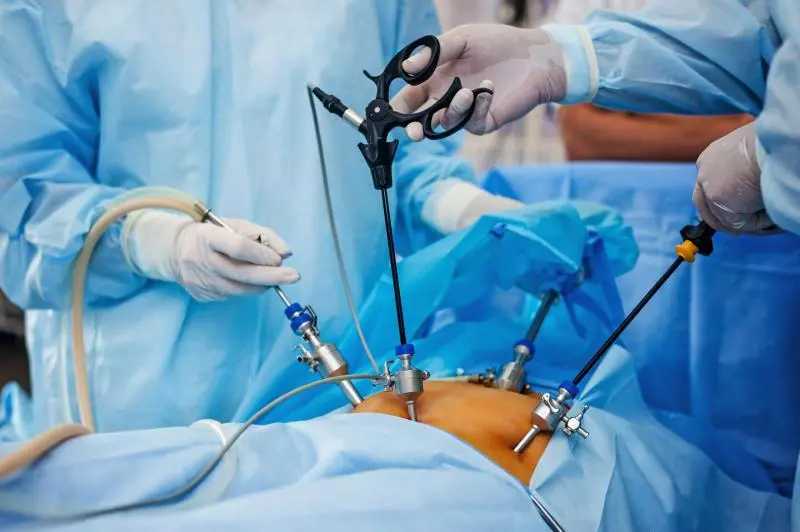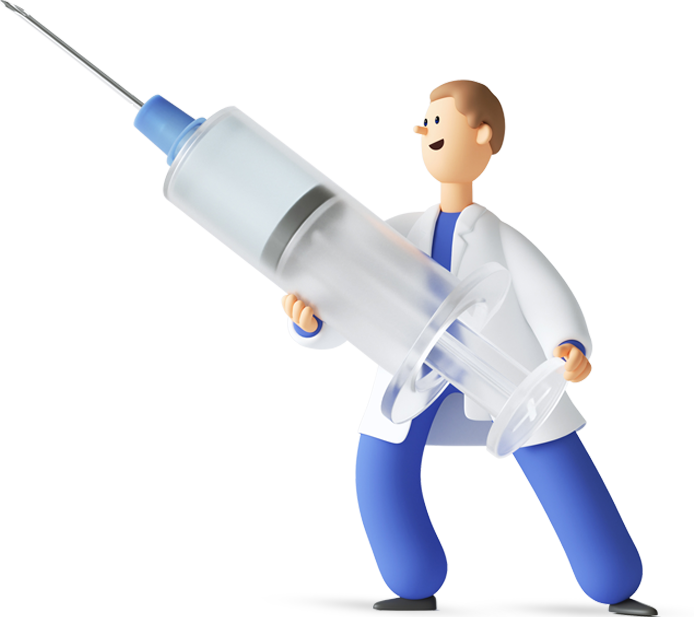Laparoscopic Myomectomy Surgery
Laparoscopic myomectomy is a surgical procedure to remove fibroids from the uterus. The procedure is minimally invasive, as it uses small incisions, a laparoscope (a thin tube with an attached camera), and special instruments. This method has advantages such as faster recovery, minimal scarring, and less post-operative pain and discomfort. This is a good option for women who want to preserve their uterus for fertility reasons. However, it is important to remember that this method may not be appropriate for all types and sizes of fibroids. Your doctor will assess your condition and plan the treatment accordingly. Read on to know more.

What Is Laparoscopy?
Other instruments can be used with a laparoscope to repair an issue. These tools are often placed into the belly through further tiny incisions. They can occasionally be introduced through the same incision as the laparoscope.

Laparoscopic myomectomy is a procedure in which uterine fibroids (myomas) are removed with the help of a laparoscope. Uterine fibroids are non-cancerous growths that develop within the muscular wall of the uterus. They can lead to symptoms such as pelvic pain, heavy menstrual bleeding, and other issues with your reproductive health.
Laparoscopic myomectomy is performed using small incisions in the abdominal wall. A laparoscope (a thin, lighted tube with a camera) and other specialized instruments are inserted through these small incisions to perform the surgery. This procedure is suitable for small to medium-sized fibroids that are either located on the outer surface of the uterus or within the muscular wall of the uterus. Unlike a hysterectomy where the entire uterus is removed, a myomectomy removes only the fibroids preserving the uterus. This method therefore is a preferred method for women who would want to concieve in the future. Read on to learn the indications of a laparoscopic myomectomy.
When is Laparoscopic Myomectomy Recommended?

Laparoscopic myomectomy is recommended for:
- Symptomatic Fibroids: When fibroids cause heavy menstrual bleeding, pelvic pain, or other symptoms that interfere with the quality of life.
- Fertility Concerns: In women experiencing infertility or recurrent miscarriages, fibroids are presumed to be a contributing factor.
- Desire for Minimally Invasive Surgery: For patients seeking a procedure with fewer complications, shorter hospital stays, and faster recovery than open surgery.
- Preservation of Uterine Integrity: In patients who wish to maintain their uterus for future pregnancies or personal reasons.
- Specific fibroid characteristics: Generally, if the fibroids are fewer in number, small in size, and accessible then laparoscopic myomectomy would be the right choice.
The final decision on the procedure of choice will be taken by your surgeon keeping in mind your symptoms, general health, and your choice of preserving fertility. A laparoscopic myomectomy is generally not recommended for larger and embedded fibroids.
Recovery and Aftercare

Here is what to expect during your recovery period.
- Pain Management: Pain medication will be prescribed for patients to manage pain post-surgery. It is important to follow your doctor’s prescription.
- Activity Restrictions: For internal healing purposes, patients need to refrain from strenuous activities, heavy lifting (nothing over 5 pounds), and sex for the first 4 to 6 weeks after surgery.
- Wound Care: Keep the incisions clean and dry. Follow your surgeon’s instructions for wound care. Report any signs of infection, such as increased redness, swelling, or discharge.
- Follow-up Appointments: Your doctor will schedule follow-up appointments at regular intervals to monitor your progress in healing and any potential risk of complications.
- Gradual Return to Normal Activities: A few days to weeks following surgery, patients can usually resume regular, non-strenuous activities. Although it might vary for individuals, a full recovery and the return to all activities, including exercise, are often anticipated in 4 to 8 weeks.
Each patient’s recovery process will vary, so it’s essential to follow the specific guidelines provided by the healthcare team.
Benefits of Laparoscopic Myomectomy
- Less invasive: Key advantages of laparoscopic myomectomy compared to undergoing an open surgery procedure include smaller incisions resulting in less overall trauma to the body.
- Reduced Pain and Scarring: Smaller incisions associated with laparoscopic myomectomy usually result in less post-operative pain and speed the healing process, resulting in smaller and less noticeable scars.
- Shorter Hospital Stay and Faster Recovery: The patient can usually go home the same day or the next morning and return more quickly to normal activities.
- Infection rate: Due to the smaller incisions and more limited need for suturing, the rate of postoperative infections is lower.
- Preserves the Uterus: This method preserves the uterus, maintaining your fertility.




